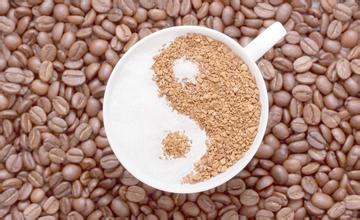Costa Rican coffee house goddess estate introduction boutique coffee beans Tara Su Latin American coffee
Arabica and Robacht: Arabica: accounts for 60% of global production, preferably at high elevations, with lower temperatures and lower yields. It has a stronger taste and elegant mellow and acidity (if you want to know more about the definition of alcohol and acidity in coffee tasting, you can trust me); about 1% caffeine (by weight) is expensive:
Robbins accounts for 40% of global production and is usually grown in areas with lower elevations and higher temperatures. The taste is lighter, about 2% caffeine, and the price is lower (called Canifola Coffee)
Robusta's coffee, no matter what name you encounter, such as Yega Sheffield, Mantenin, Columbia, etc., belong to the sub-line or native variety under the Arabica variety.
As for why it is called Manning and Yejasuefi, it has something to do with the way it is named: in the case of Yegashafi, it is a small town in Ethiopia, so the coffee produced in this town is named Yegasuefi. There will also be different small producing areas and estates or cooperatives in the town. For example, there is a place called Kochel and a cooperative called the Rico Cooperative. Most of the coffee they produce is native to Arabica, so we can call this coffee the original species of the Rico Cooperative in the Yega Fischer producing area of Ethiopia!
So to put it simply, in addition to saying that it is Robusta, almost all the coffee beans you can come into contact with are Arabica beans! However, the varieties of sublines grown in different places are different.
However, in recent years, a new method of "honey" treatment has become fashionable, because there is no need to invest in huge water tanks and drying fields, so that many independent manors or small cooperatives can afford it. With the application of this new treatment, a kind of "honey-treated coffee" with high sweetness, low acidity and complex taste has become the goal of the coffee industry in recent years. One of the best in recent years in the major competitions, so as to greatly enhance the popularity of the manor, Don Mayo is one of them.
The key to honey treatment lies in the amount of pulp retained. The more it is retained, the more obvious the characteristics of honey treatment will be. However, the risk of excessive fermentation will be higher, and the characteristics of each "Honey cofffee" will be different due to different conditions, such as the local climate (sunshine / rainfall probability / air humidity), or the processor's preference.

Important Notice :
前街咖啡 FrontStreet Coffee has moved to new addredd:
FrontStreet Coffee Address: 315,Donghua East Road,GuangZhou
Tel:020 38364473
- Prev

Kenya Coffee Estate Arabica Coffee Estate Introduction Boutique coffee beans
Arabica and Rochester: Arabica: 60% of global production, best grown at high altitudes, lower temperatures and lower yields. It has a stronger flavor, more body and acidity (please email me if you want to know more about coffee tasting definitions of body and acidity); about 1% caffeine (by weight); high price: robert accounts for 40% of global production,
- Next

Panamanian Coffee Esmeralda Manor with smooth taste
The finest coffee in Panama (Panama) is grown in the west of the country, near Costa Rica and the Pacific Ocean. The Boquet district of Chiriqui province is the most famous for its coffee, as well as Wakan, Santa Clara and Kendra. Other areas include David, Remacimeinto, Bugaba and Tolai (T).
Related
- Does Rose Summer choose Blue, Green or Red? Detailed explanation of Rose Summer Coffee plots and Classification in Panamanian Jade Manor
- What is the difference between the origin, producing area, processing plant, cooperative and manor of coffee beans?
- How fine does the espresso powder fit? how to grind the espresso?
- Sca coffee roasting degree color card coffee roasting degree 8 roasting color values what do you mean?
- The practice of lattes: how to make lattes at home
- Introduction to Indonesian Fine Coffee beans-- Java Coffee producing area of Indonesian Arabica Coffee
- How much will the flavor of light and medium roasted rose summer be expressed? What baking level is rose summer suitable for?
- Introduction to the characteristics of washing, sun-drying or wet-planing coffee commonly used in Mantenin, Indonesia
- Price characteristics of Arabica Coffee Bean Starbucks introduction to Manning Coffee Bean Taste producing area Variety Manor
- What is the authentic Yega flavor? What are the flavor characteristics of the really excellent Yejasuffi coffee beans?

